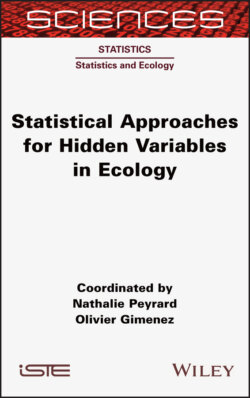Читать книгу Statistical Approaches for Hidden Variables in Ecology - Nathalie Peyrard - Страница 12
I.2. Hidden variables in statistical modeling
ОглавлениеThe term “hidden variable”, widely used in ecology, finds its translation in the more general notion of latent variables in statistical modeling. This notion encompasses several situations and goes beyond the idea of unobservable physical variables alone. In statistics, a latent variable is generally defined as a variable of interest, which is not observable and does not necessarily have a physical meaning, the value of which must be deduced from observations. More precisely, latent variables are characterized by the following two specificities: (i) in terms of number, they are comparable to the number of data items, unlike parameters that are fewer in number. Consider, for example, the case of a hidden Markov chain, where the number of observed variables and latent variables is equal to the number of observation time steps; (ii) if their value were known, then model parameter estimation would be easier. For example, consider the estimation of parameters of a mixture model where the groups of individuals are known.
In practice, if a latent variable has a physical reality but cannot be observed in the field (e.g. the precise trajectory of an animal, or the abundance of a seedbank), it is often referred to as a hidden variable (although both terms are often used interchangeably). In other cases, the latent variable naturally plays a role in the description of a given process or system, but has no physical existence. This is the case, for example, of latent variables corresponding to a classification of observations into different groups. We will refer to them as fictitious variables. Finally, latent variables may also play an instrumental role in describing a source of variability in observations that cannot be explained by known covariates, or in establishing a concise description of a dependency structure. They may result from a dimension reduction operation applied to a group of explanatory variables in the context of regression, as we see in the case of the principal components of a principal component analysis.
The notion of latent variables is connected to that of hierarchical models: if they are not parameters, the elements in the higher levels of the model are latent variables. It is important to note that the notion of latent variables may be extended to cover the case of determinist quantities (represented by a constant in a model). For example, this holds true in cases where the latent variable is the trajectory of an ordinary differential equation (ODE) for which only noisy observations are available.
